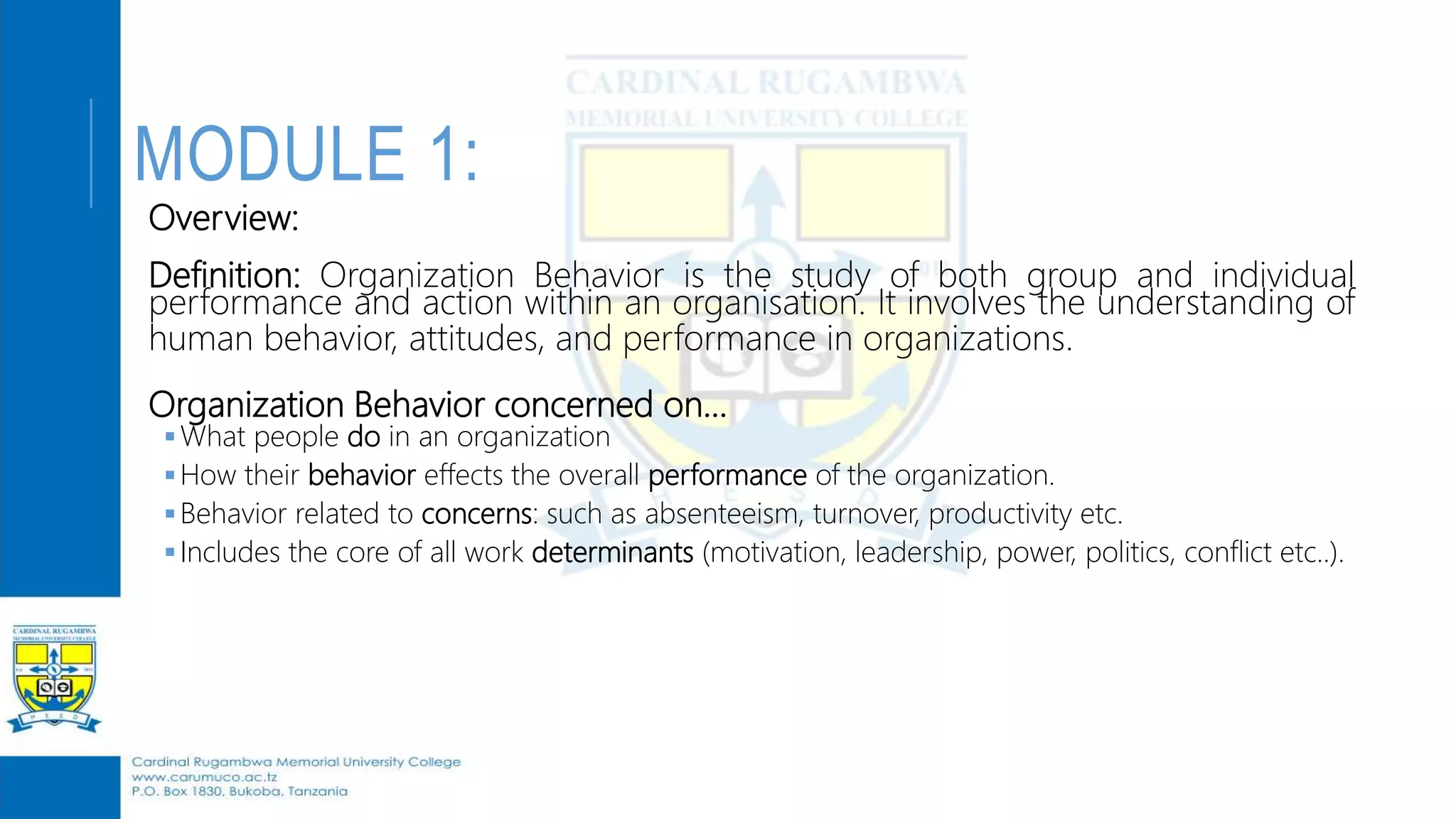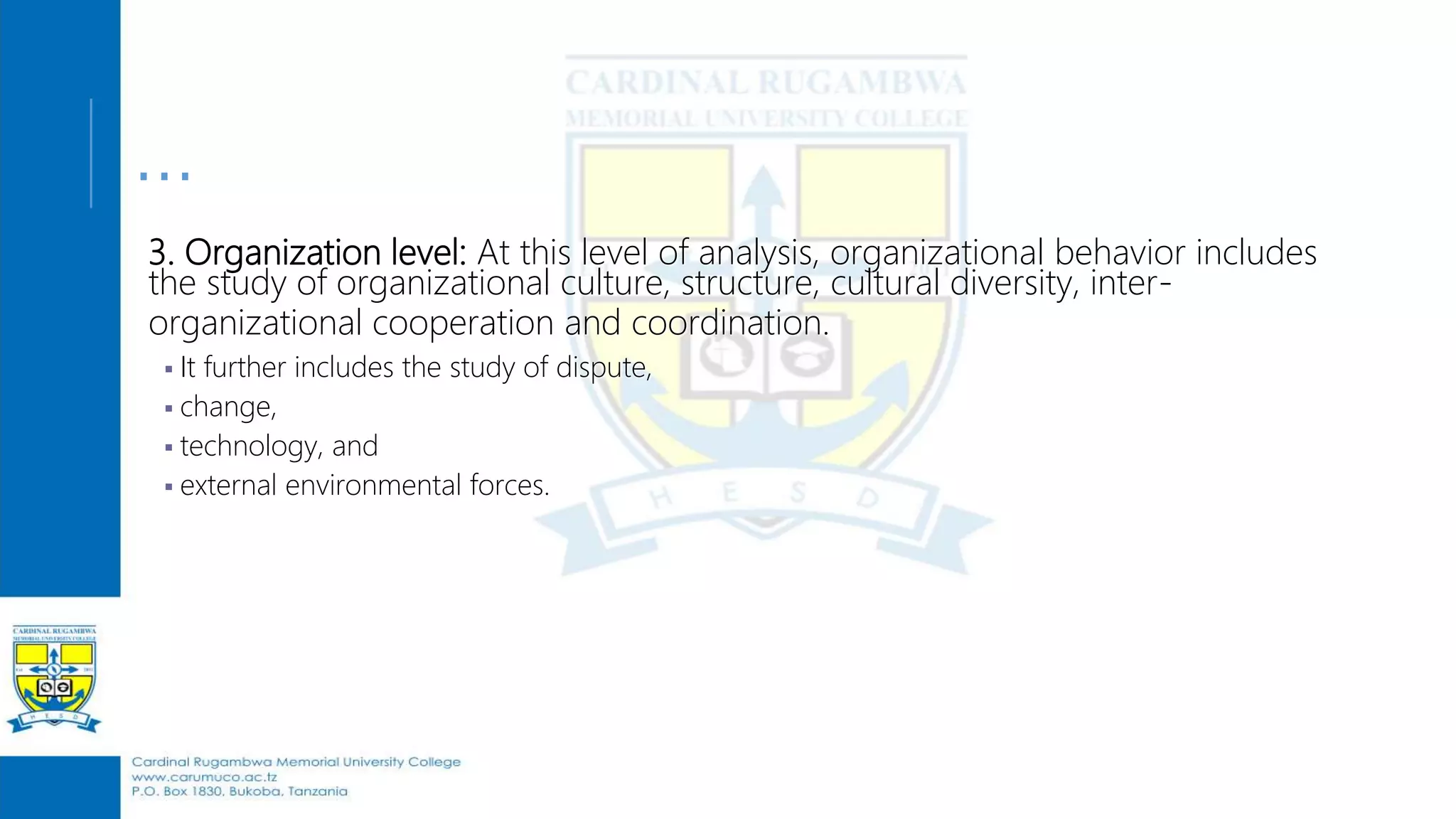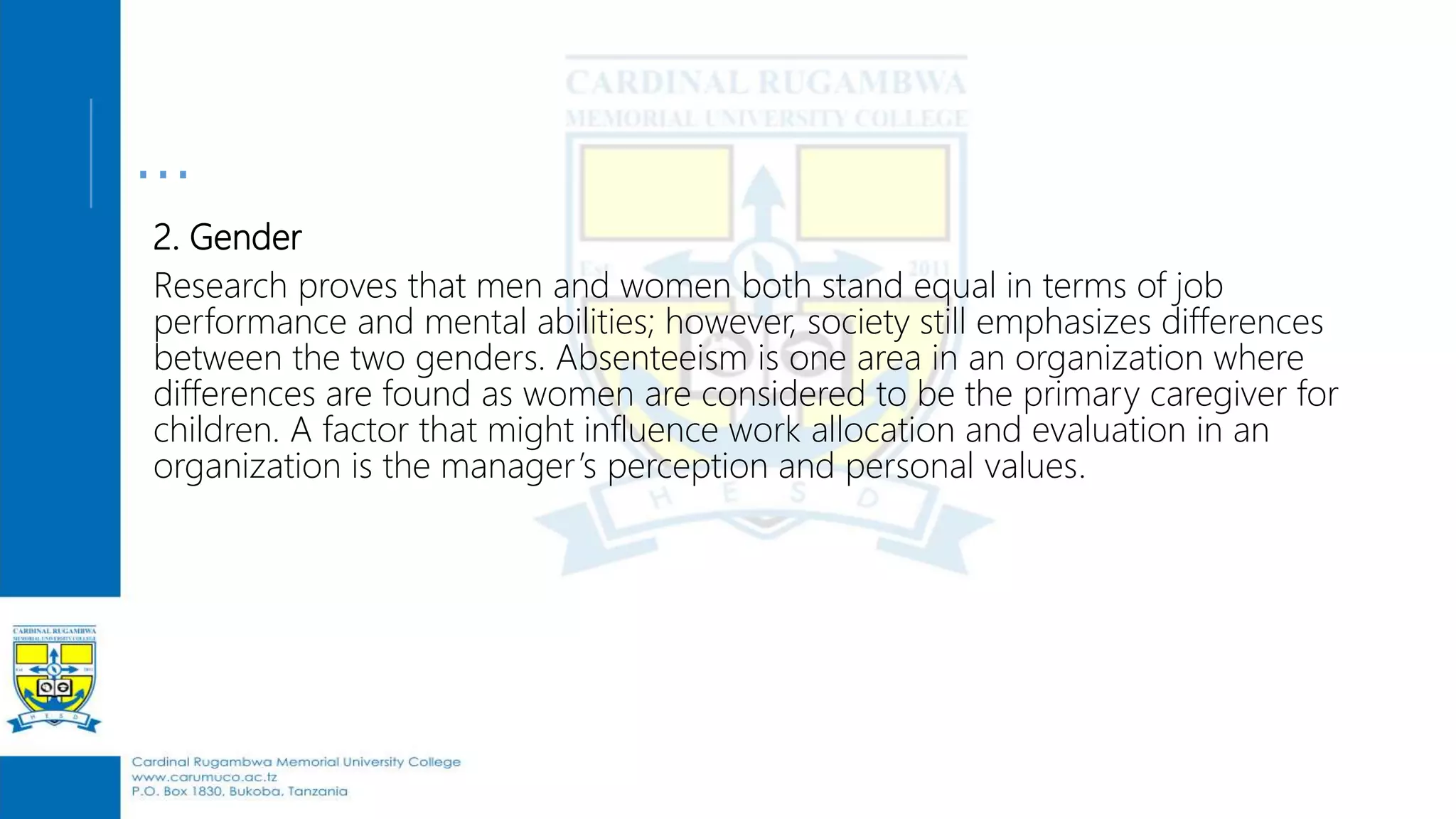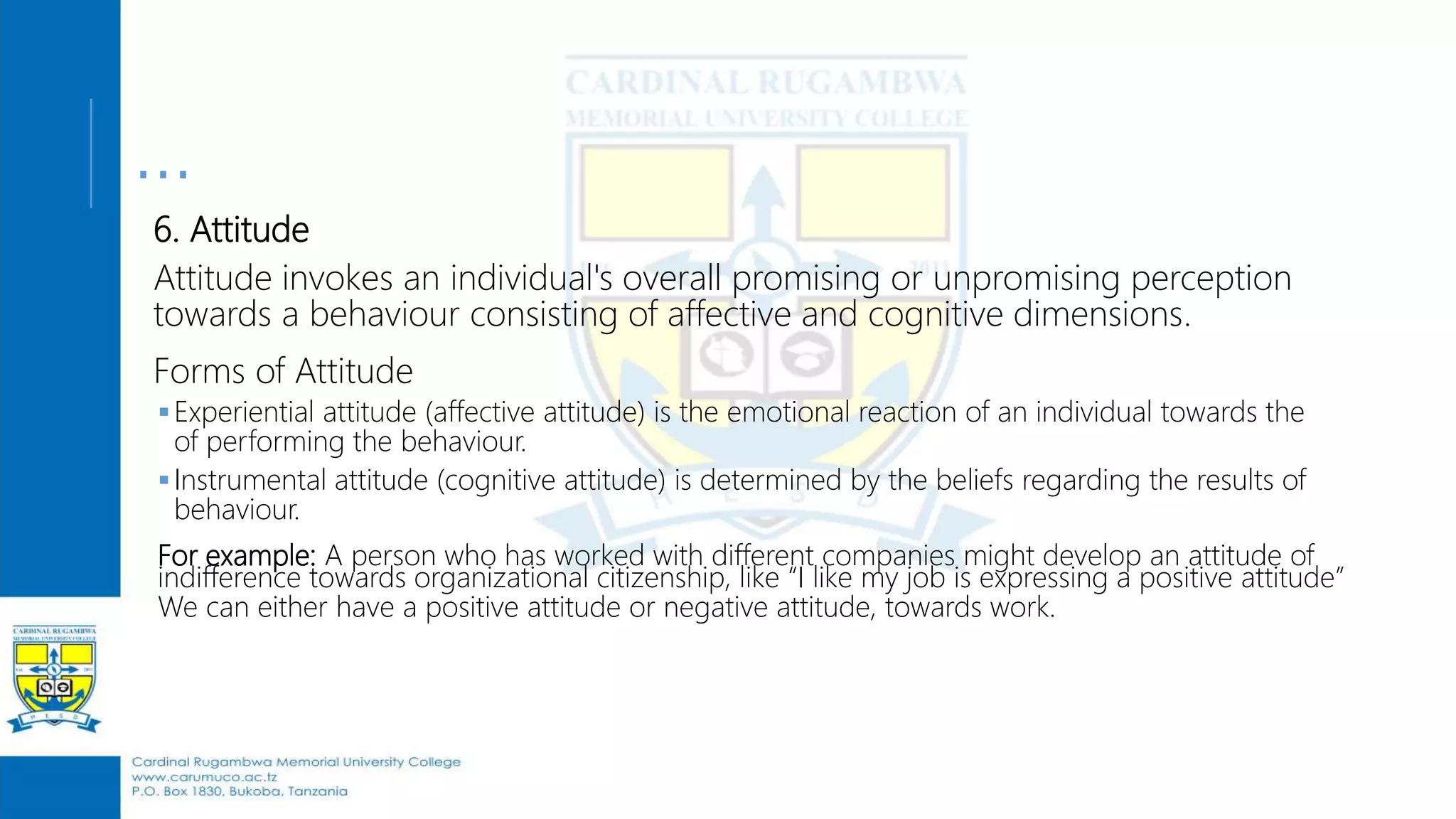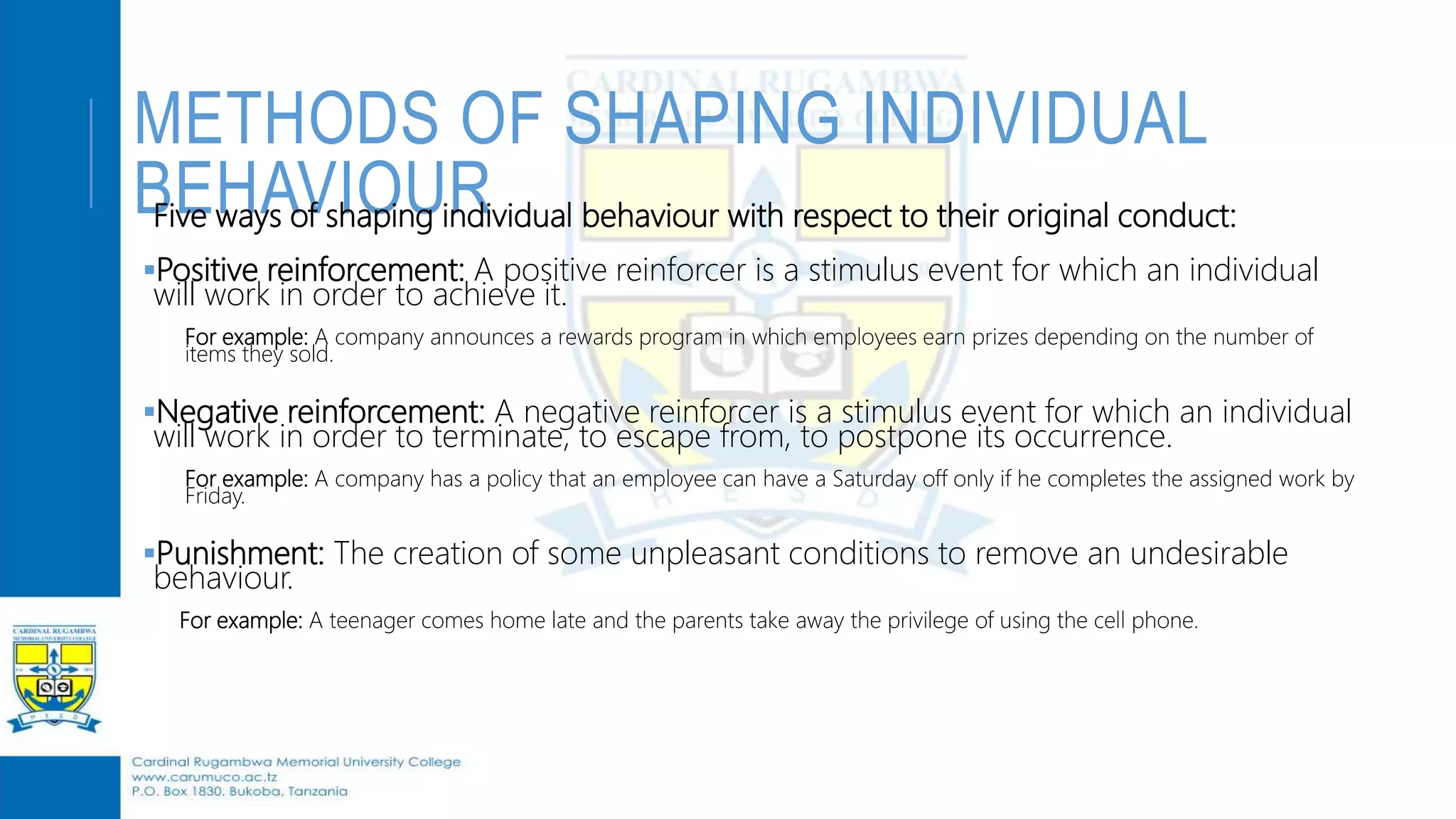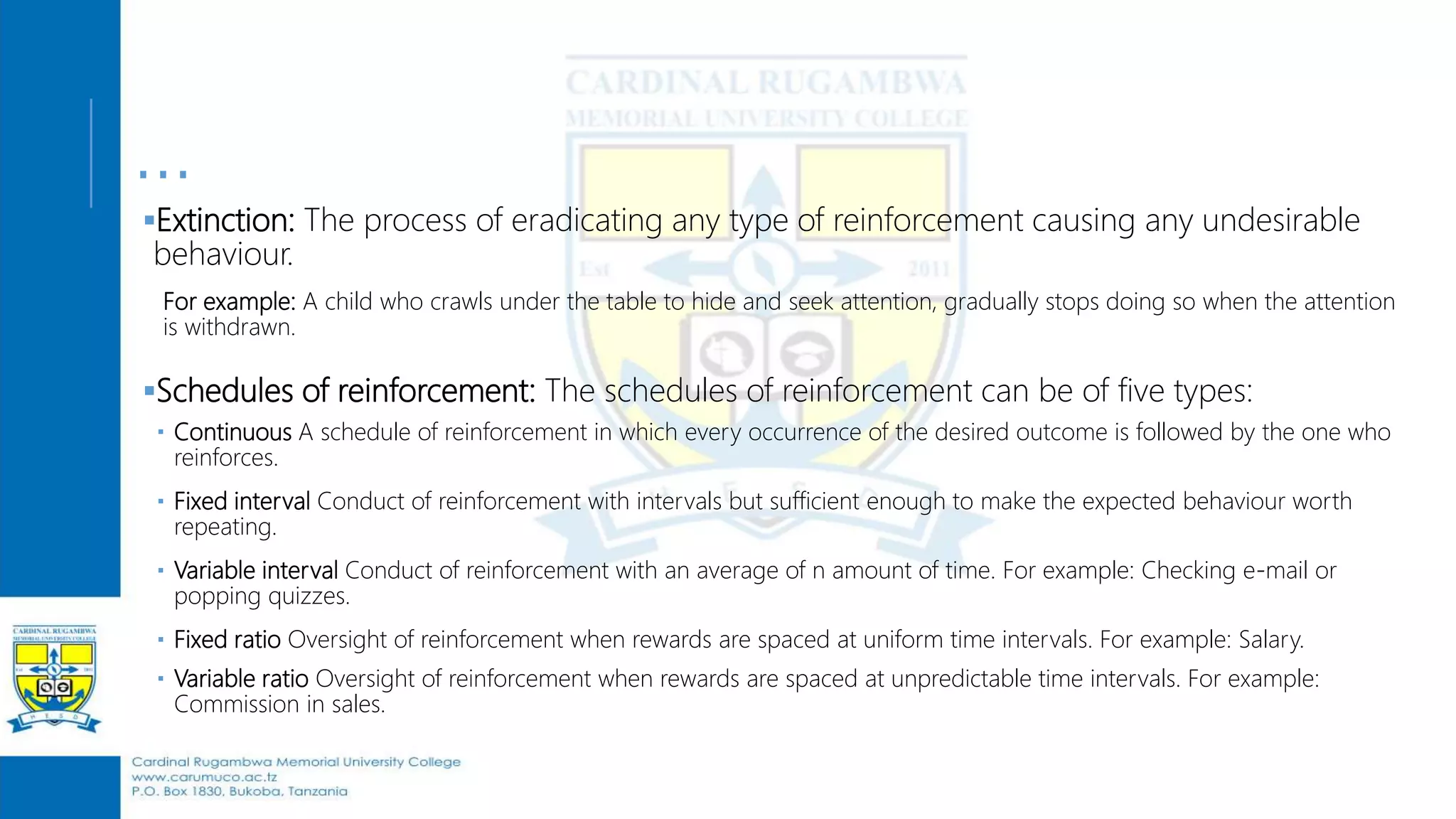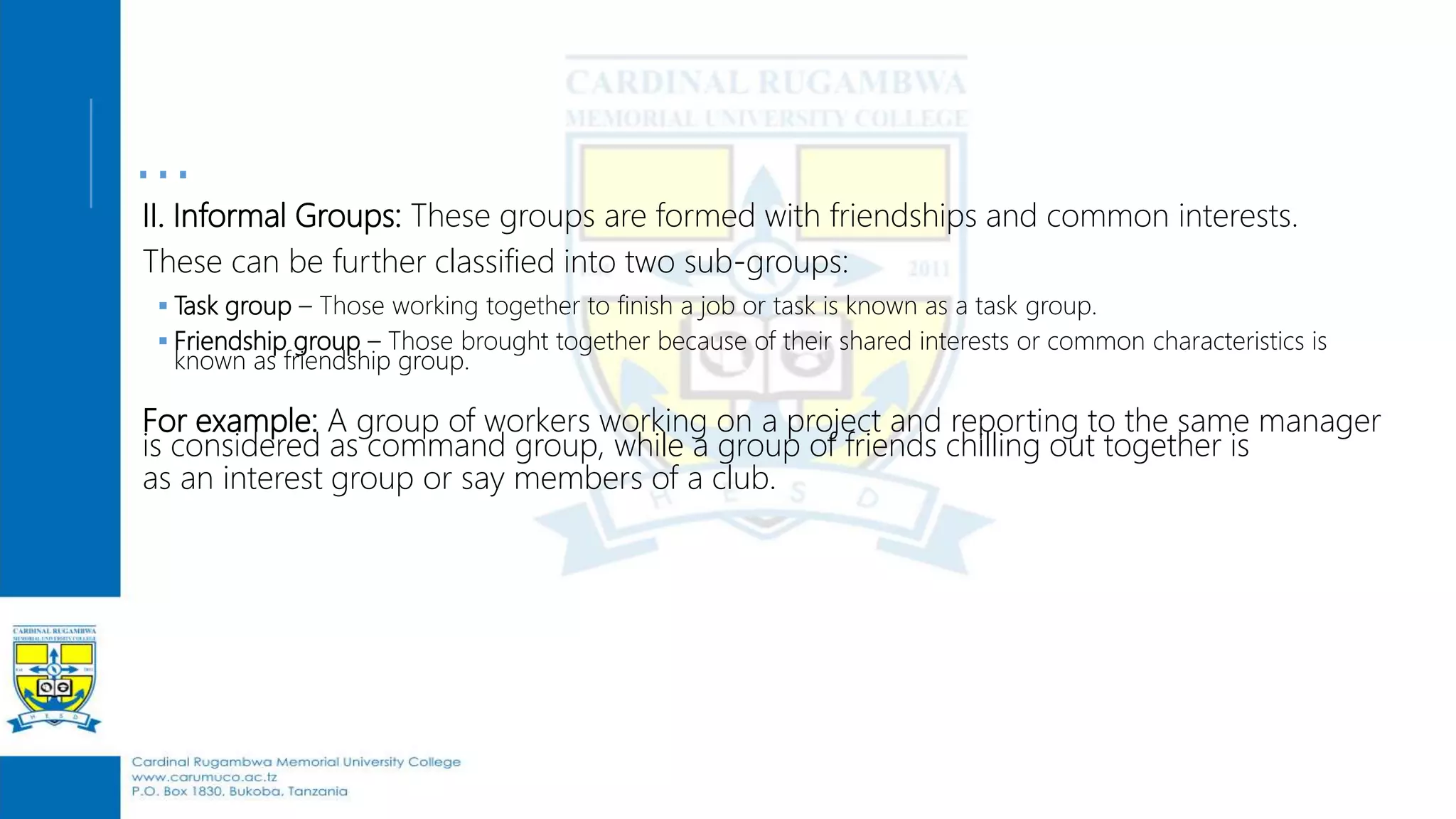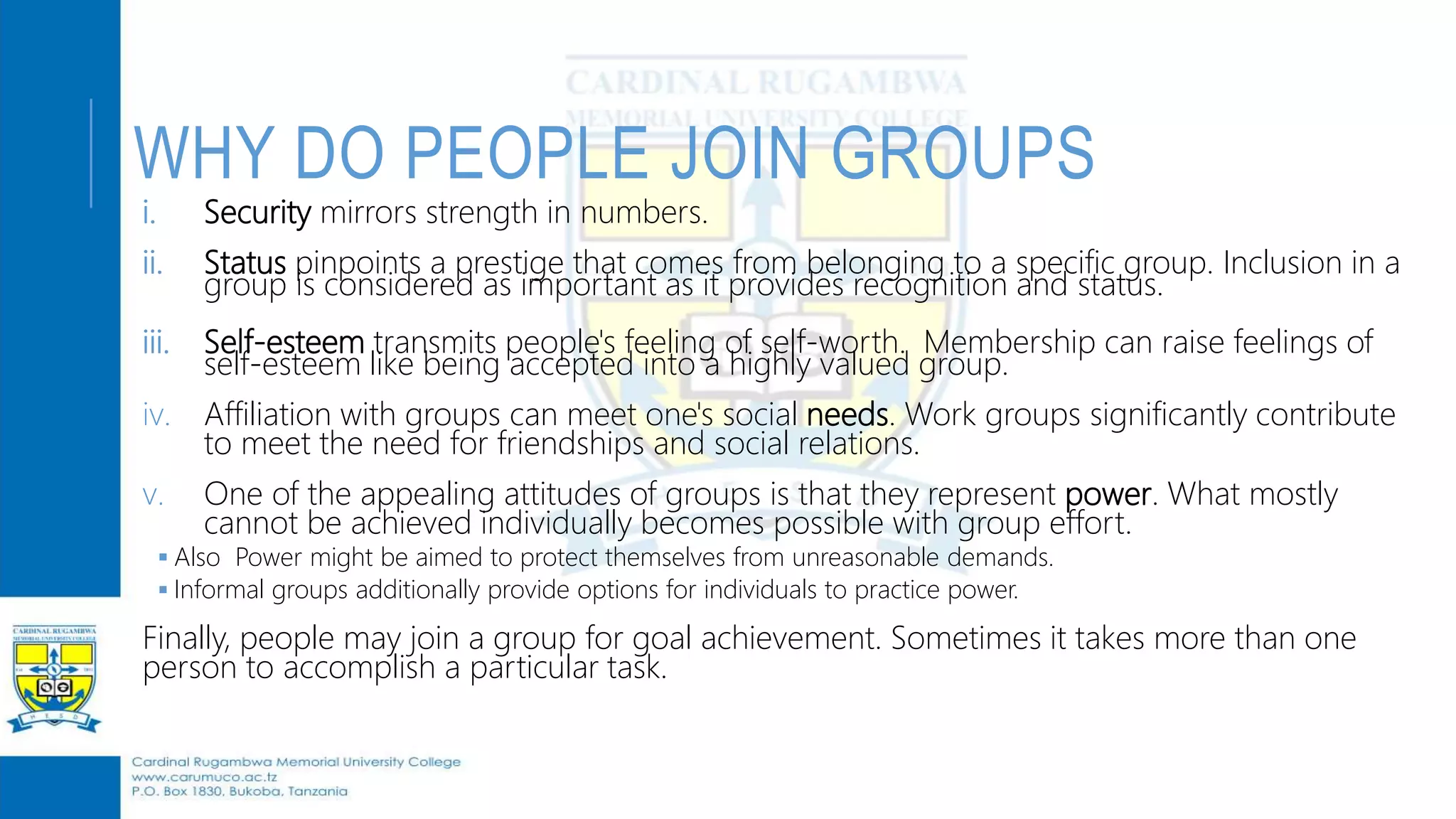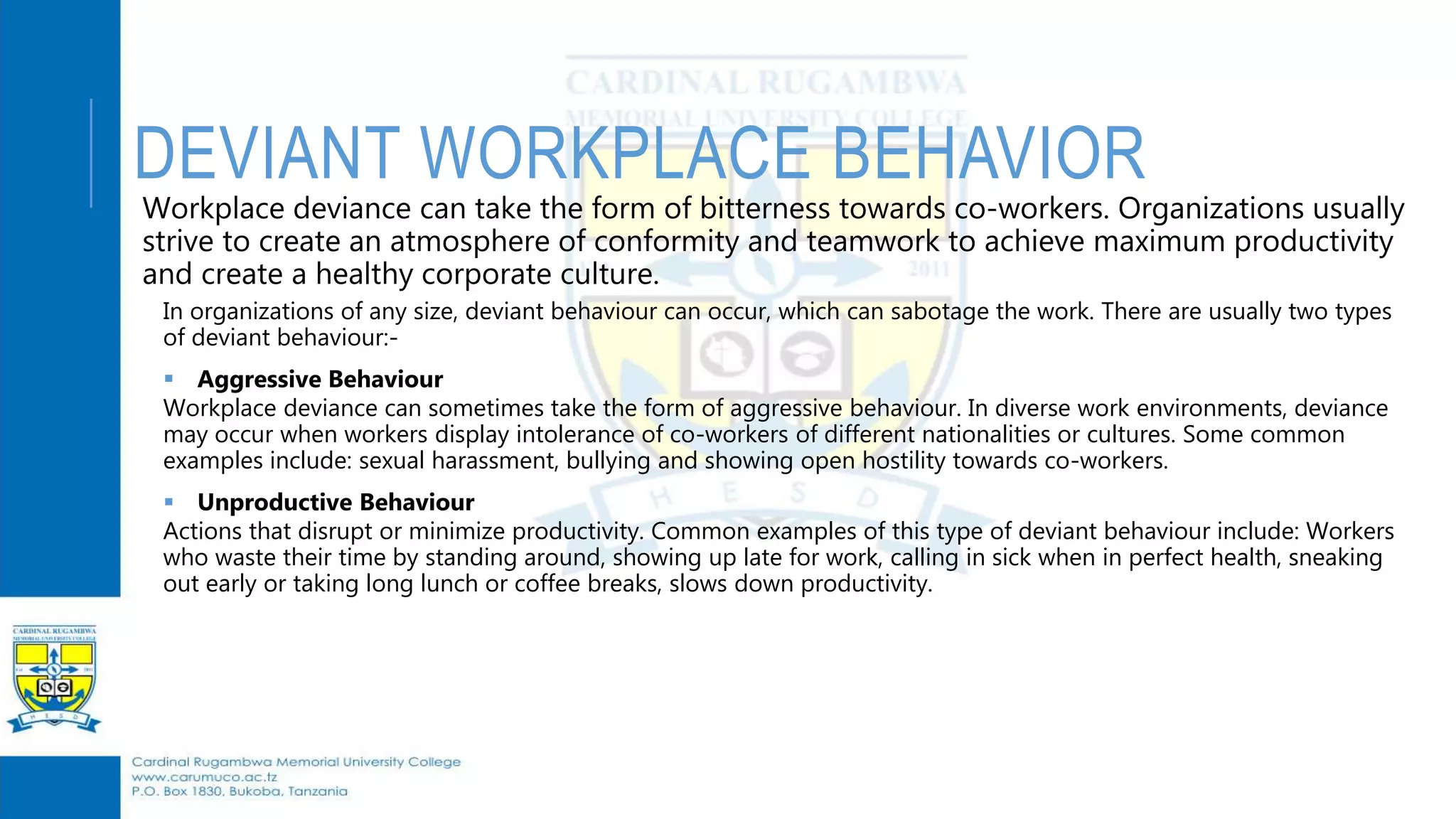Organization behavior is the study of individual and group behavior within organizations. It examines how behaviors affect organizational performance. Behaviors are analyzed at the individual, group, and organizational levels. At the individual level, factors like personality, perception, and attitudes influence behaviors. At the group level, roles, norms, leadership, and communication impact behaviors. Deviant workplace behaviors that can negatively impact organizations include aggression, unproductive behaviors, abuse of property, politics, and gossip. Effectively managing these behaviors across all levels is important for organizational success.

